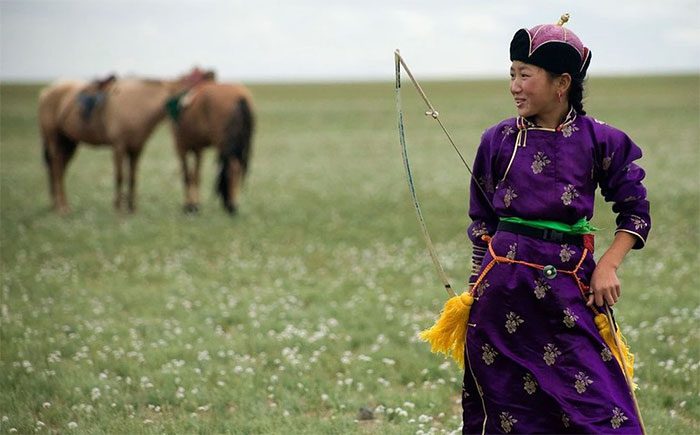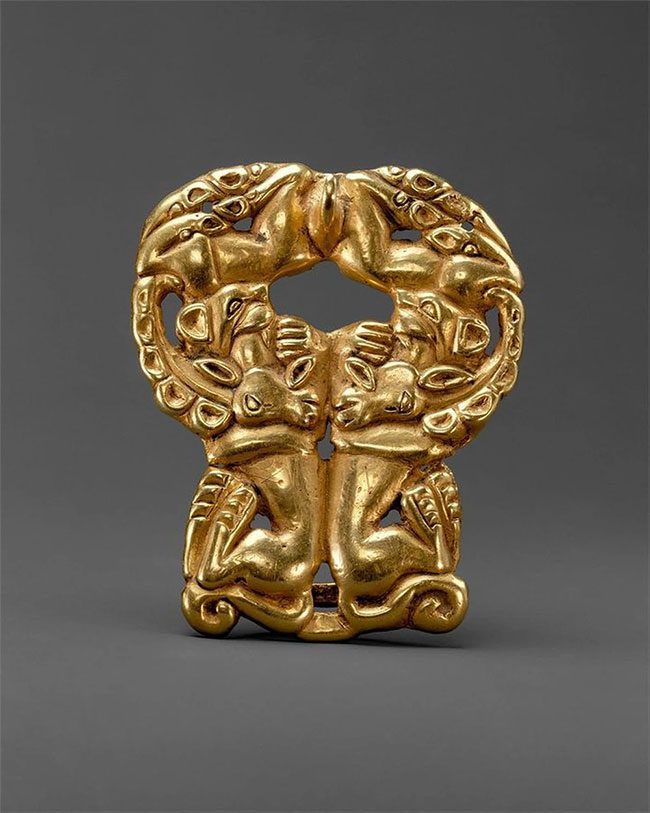The Xiongnu Confederation, a nomadic kingdom, controlled vast territories and exerted significant pressure on China for centuries.
Despite lacking a capital or a royal court, the Xiongnu Confederation effectively governed extensive lands and imposed considerable strain on China over many centuries. Notably, the guardians of the borders were not men, but women, often referred to as “the invisible silk that binds the strength of the nation.”
Dominating the Silk Road
One of the primary reasons ancient China invested effort in building the Great Wall was to deter the Xiongnu. Since several centuries BCE, the Xiongnu frequently raided and plundered the villages of the Han people.
The Xiongnu traveled on horseback and wielded bows and arrows. Their brutal violence and relentless looting instilled fear and contempt among the Han, who derogatorily named them Xiongnu (fierce slaves).

Xiongnu women were the “invisible silk connecting the Xiongnu nomadic empire.”
Contrary to the derogatory name, the Xiongnu were military and political geniuses. This kingdom, without a capital or royal court, was a coalition of numerous nomadic tribes, each powerful in its own right but not fragmented.
The key link among the tribes in the Xiongnu nomadic kingdom was women. They were exceptional merchants, continuously supplying goods along the Silk Road while skillfully trading with merchants from various regions.
According to Assistant Professor of Archaeology Bryan Miller from the University of Michigan, Xiongnu women were the “invisible silk that connects the Xiongnu nomadic empire.” “By adeptly managing and dominating the trade network of the Silk Road, they held a crucial economic role,” affirmed Jamsranjav Bayarsaikhan, Director of the Research Center at the National Museum of Mongolia in Ulaanbaatar.
Following their economic roles, Xiongnu women rose to hold significant positions in society and ultimately participated in politics. Genetic studies indicate that the Xiongnu women buried in lavish tombs near the Chinese border were markedly different from ordinary Xiongnu women.
They had close kinship ties with the Xiongnu kings, leading researchers to speculate that these were noble princesses. They were married off to tribes controlling the borders to forge alliances, thereby helping their fathers solidify military coalitions while personally overseeing the economic and political situations in those regions.
“This was an extremely important strategy,” researcher Bayarsaikhan emphasized. Thousands of years later, Genghis Khan (Mongolia) still employed this method to consolidate and seize power.

Xiongnu princesses helped their fathers strengthen military alliances and manage border territories. (Photo: Ancient-origins.net).
Supreme Reverence
After genetic analysis results emerged, some researchers speculated that Xiongnu women might only have been “pawns serving men’s imperial ambitions.” However, archaeological findings suggest the opposite.
At the Takhiltyn Khotgor cemetery in Khovd, Western Mongolia, archaeologists discovered several grand tombs built to honor the women resting within.
Their coffins were intricately decorated with gold symbols of the sun and moon associated with the Xiongnu emperor, surrounded by exceedingly simple male coffins. One woman’s tomb even featured six horses and a chariot surrounding it.
In the Shombuuzyn Belchir cemetery in the same region, the wealthiest tombs also belonged to women. Their burial goods included Chinese mirrors, silk clothing, porcelain beads, wooden carts… all of which were the most luxurious items of the time.
The tomb structures of Xiongnu women resembled inverted pyramids, reaching depths of up to 20 meters. In many tombs, archaeologists found elaborately decorated wide belts.

A belt, a symbol of power and leadership, found in a Xiongnu woman’s tomb. (Photo: Bbc.com).
“In feudal times, belts were an important symbol demonstrating status, power, and were only granted to men. Interestingly, among the Xiongnu, they belonged to women,” said archaeologist Ursula Brosseder from the Leibniz Institute of Archaeology (Germany).
“If they were merely pawns, Xiongnu women would not have been buried in such luxurious tombs, but rather modestly placed beside their husbands’ graves. Clearly, in Xiongnu society, they were held in the highest esteem,” Assistant Professor Miller analyzed.
In many ordinary Xiongnu women’s tombs, archaeologists found horseback riding equipment.
While they cannot assert that Xiongnu women participated in the military or fought in wars, they are certain that Xiongnu women were skilled horseback archers. For life on the steppes in ancient times, this was a prerequisite for both men and women, young and old.


















































